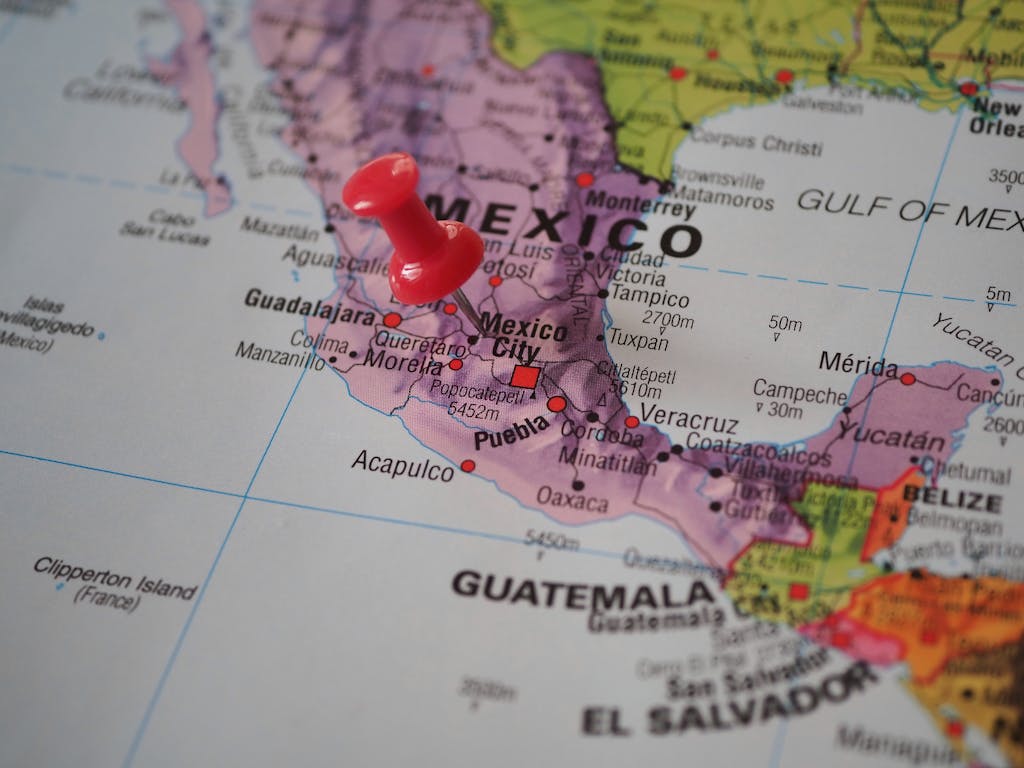
“The Gulf of Mexico”; which is a fundamental coastal region for trade, energy, and biodiversity, in the recent times has become a big controversy. It is led by the decision taken by the new government of the United States. President Donald Trump signed an executive order to rename The Gulf of Mexico by the “Gulf of America” which is titled “Restoring Names That Honor American Greatness,” in January 2025 mandating the renaming of several landmarks, including the Gulf of Mexico. This largely unexpected decision has instigated many domestic and international debates about its legal, diplomatic, and cultural implications. Also, the most interesting and the most notable aspect of this development is Google’s role in updating the name on its platform, i.e., Google Maps reflecting the change for U.S. users. This article involves all about this scenario’s background, reactions, and broader impact.
Background and Rationale
The Gulf of Mexico has been recognized by its current name for more than four centuries. It’s a very vital body of water which is bordered by the United States, Mexico, and Cuba, has been recognized by its current name for over four centuries. The name “Gulf of Mexico” has been in calling since the mid-17th century, showing its historical and geographical significance. Orders given by President Trump were very shocking at first, liked by many people as well as disheartening for lots to. Nevertheless, the order emphasizes the importance of honoring American history and heritage by changing the name of national landmarks. The order is towards the Secretary of the Interior to rename the Gulf of Mexico as the “Gulf of America”. The time allotted was 30 days, contemplating its importance to the U.S. economy and global commerce.
Implementation and Compliance
After the executive order announced, plenty of federal agencies and private entities started implementing the name change. This can be seen as under:
Federal Agencies
Changes have now started to come. It can be seen by this; the U.S. Coast Guard and the state of Florida have begun calling the Gulf of Mexico as the Gulf of America in their official communications.
Technology Companies
Google also showed its activeness. Without wasting any time, they announced that Google Maps will also update the name from “Gulf of Mexico” to “Gulf of America” for the U.S. users. Once the change is reflected in the U.S. Geographic Names Information System. One thing is there that in Mexico, the name will remain “Gulf of Mexico,”. Also, one thing should be kept in mind that the users outside the two countries will see both of the names.
Energy Companies: Chevron has also adopted the term “Gulf of America” in its official communications, aligning with the federal orders and directive. International and Domestic Reactions
The renaming of Gulf of Mexico has given a whole lot of responses. Mexico surely been prominent in all the responses and reactions on this scenario. Also, Media as well as public have also been on the front foot in this matter. Let’s see it in some detail:
Mexico
The strongest response without any doubt came from Mexico. The President of Mexico, Claudia Sheinbaum has challenged the name change, claiming that the U.S. cannot unilaterally change the name of the Gulf beyond its territorial waters. She further emphasized that international law limits a country’s sovereignty to 12 nautical miles from its coastline. She also took steps in this matter by sending a letter to Google. In the letter she requested to reconsider the name change on its platform. Mexico’s Ministry of Foreign Affairs has also been forwarding in this issue. They filed a formal complaint with the United Nations. They called this move “a violation of shared heritage and international norms.”
Public Figures
The former Secretary of the State, Hillary Clinton was observed suppressing a laugh during the inaugural address of President Trump when he was announcing the renaming plan, indicating skepticism or his amusement at the decision. The citizens of Mexico have widely criticized and disliked the name change. Some of them called it a “diplomatic provocation” and some others also dismissing it as “political theater.
Media Discourse
Media has also been seeing it as a very poor measure. They have sparked debates about the fact that what were the motivations behind this change and what will be its potential implications for the U.S.-Mexico relations in the future. Some view it as a move for national pride, while others think it as an unnecessary alteration with possible diplomatic repercussions.
Legal and Geographical Considerations
Well, being an international body of water gets many complex legal and geographical challenges:
International Recognition
We know very well that the U.S. can carry out the changed name in federal to adopt the new name. The International Hydrographic Organization, which systematizes names of global maritime features, recognizes the name “Gulf of Mexico.”
Historical Precedents
There have been lots of occasions before, which we have seen in the past, where countries refer to the same body of water by different names. It often reflects geopolitical tensions. For example, you can see the body of water between Iran and the Arabian Peninsula. Well. It is known as the “Persian Gulf” in Iran and the “Arabian Gulf” in some Arab nations. As a result, it leads to ongoing naming disputes as we can expect.
Impact on Diplomacy and Trade
The renaming has raised lot of tensions regarding its implications for U.S.-Mexico relationship. These two countries together for years, share not only a border but also much important economic ties. The Gulf of Mexico now Gulf of America plays a crucial role in energy production, fishing, as well as trade. Mexican officials have expressed concerns that the name change could possibly cause big damage in there and US relation. Specially in ongoing negotiations over the shared oil and gas resources in the Gulf.
There are a lot of multinational companies operating in the region, this dispute can also affect their working. Some energy giants like Chevron and Pemex have yet to officially address the naming controversy. Although Chevron has reportedly adopted the term “Gulf of America” in internal communications. This is done to align with the U.S. regulations.
What Next?
This big decision to rename the Gulf of Mexico to the Gulf of America has started a lot worried discussion encompassing legal, diplomatic, and cultural dimensions. So, as the U.S. continues with implementing this change within its federal framework, the international community’s response on this and the long-term consequences of this renaming effort remain to be seen.
Author
Muhammad Bin Nadeem




